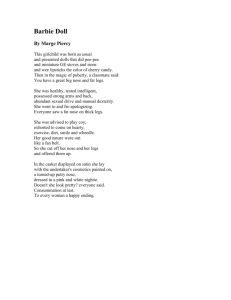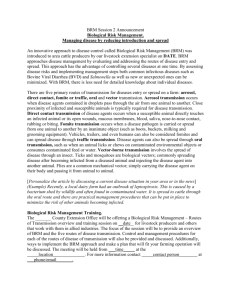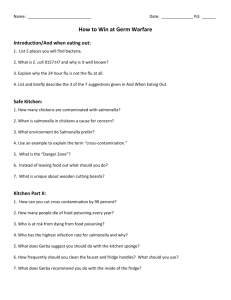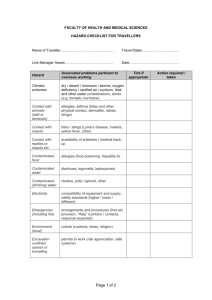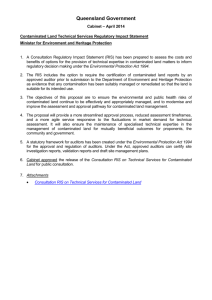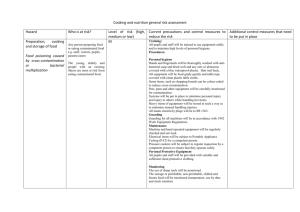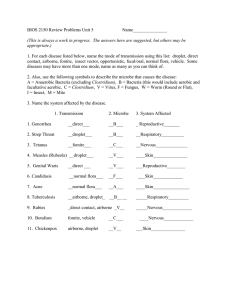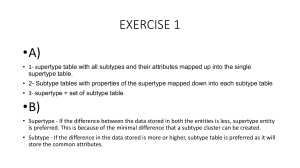TRANSMISSION ROUTE DEFINITIONS
advertisement
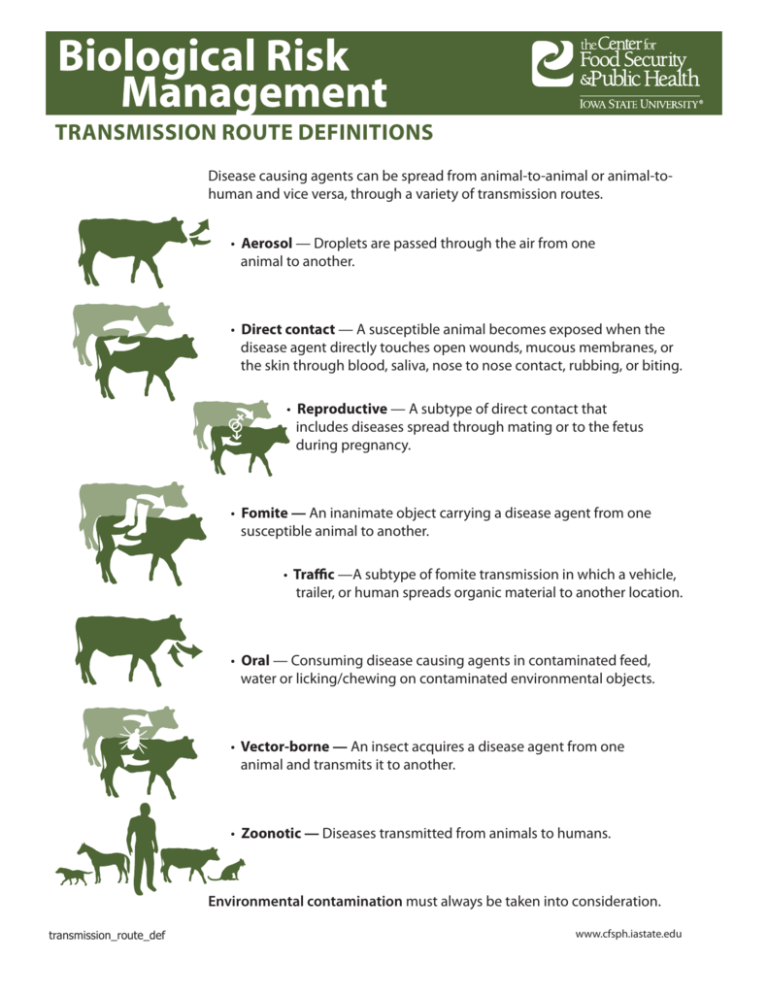
TRANSMISSION ROUTE DEFINITIONS Disease causing agents can be spread from animal-to-animal or animal-tohuman and vice versa, through a variety of transmission routes. • Aerosol — Droplets are passed through the air from one animal to another. • Direct contact — A susceptible animal becomes exposed when the disease agent directly touches open wounds, mucous membranes, or the skin through blood, saliva, nose to nose contact, rubbing, or biting. • Reproductive — A subtype of direct contact that includes diseases spread through mating or to the fetus during pregnancy. • Fomite — An inanimate object carrying a disease agent from one susceptible animal to another. • Traffic —A subtype of fomite transmission in which a vehicle, trailer, or human spreads organic material to another location. • Oral — Consuming disease causing agents in contaminated feed, water or licking/chewing on contaminated environmental objects. • Vector-borne — An insect acquires a disease agent from one animal and transmits it to another. • Zoonotic — Diseases transmitted from animals to humans. Environmental contamination must always be taken into consideration. transmission_route_def www.cfsph.iastate.edu


